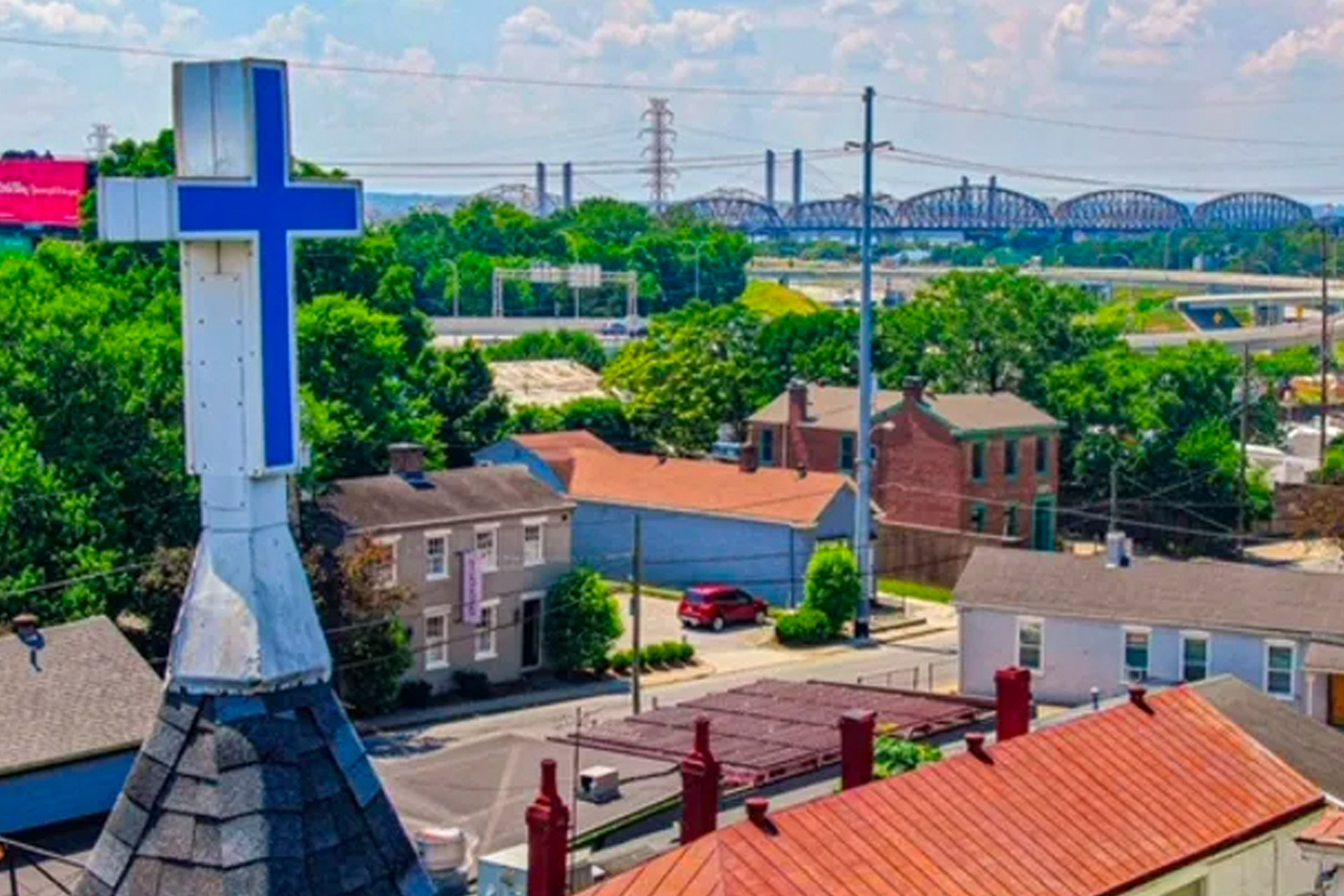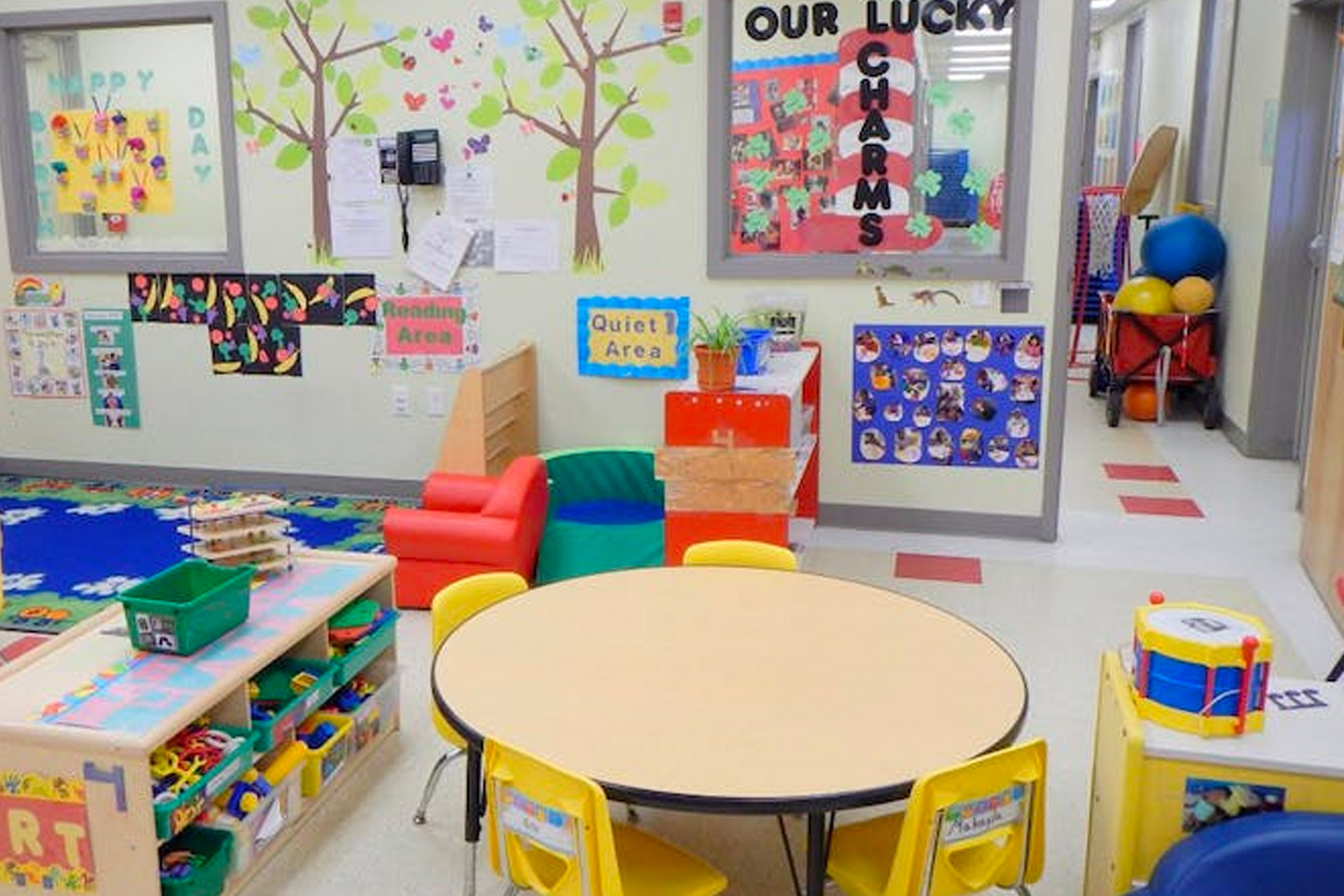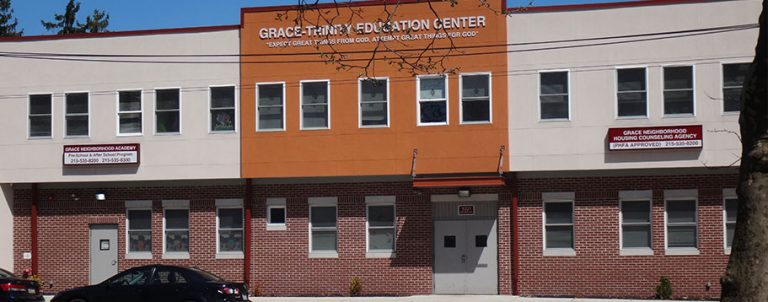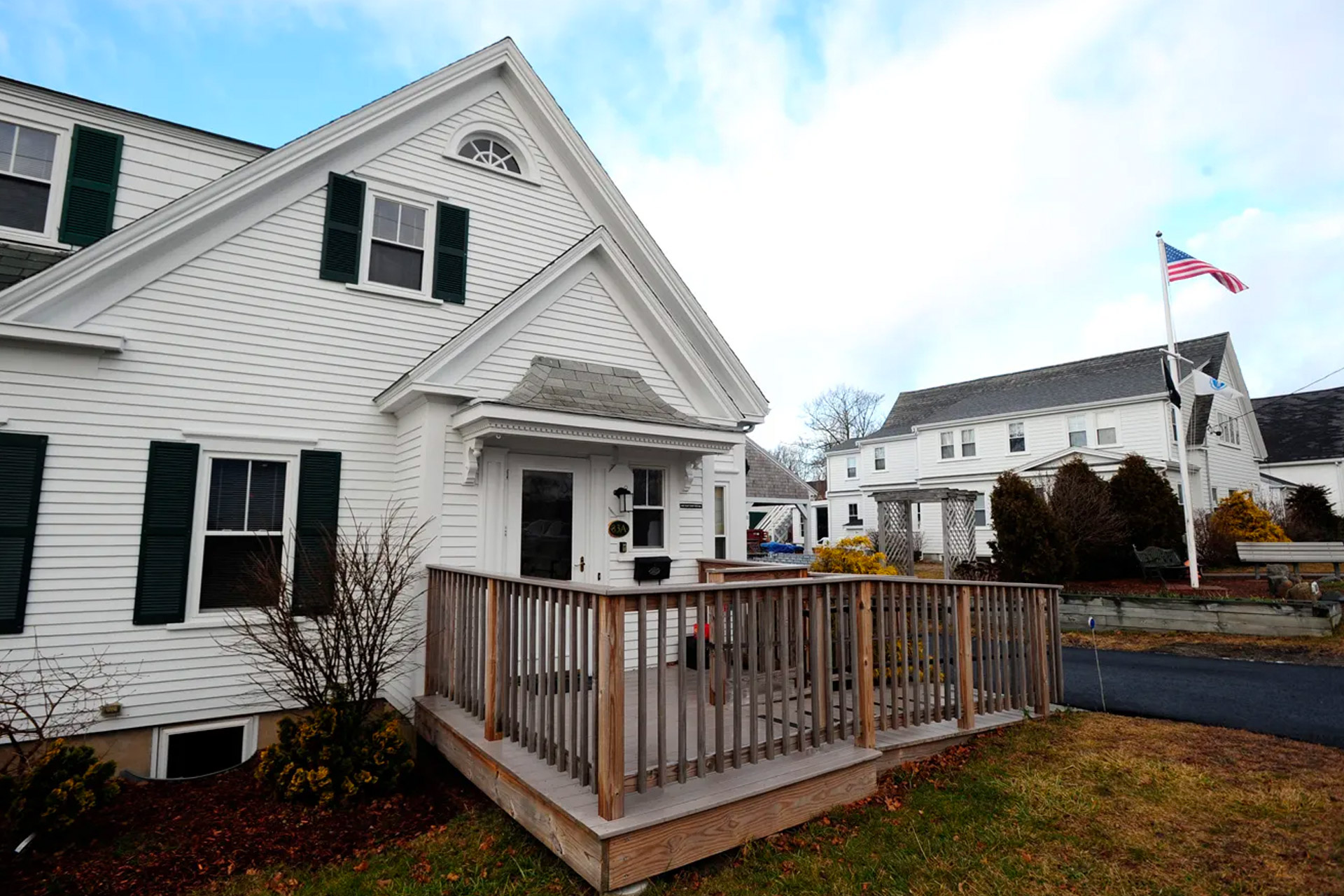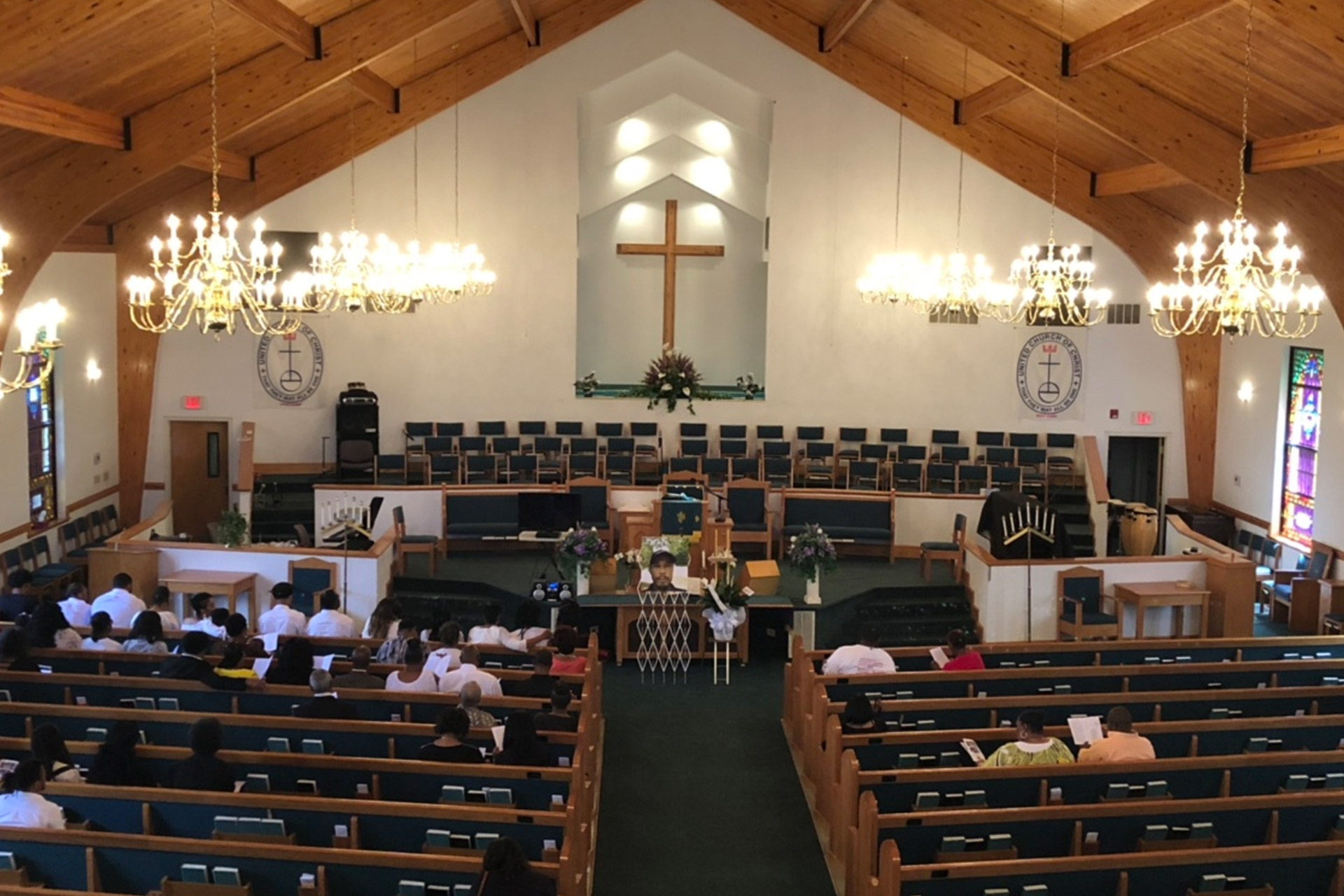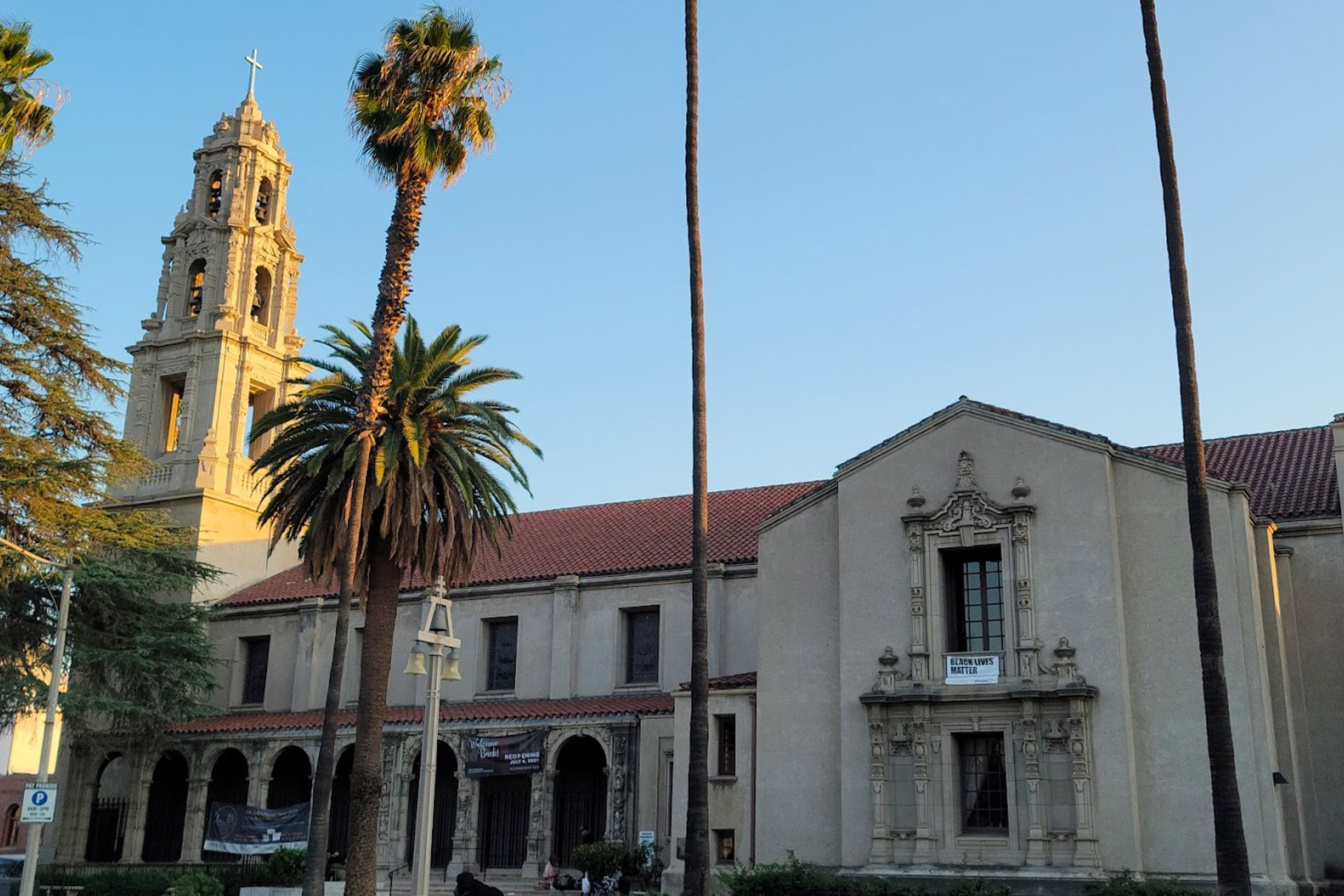Neighborhood Development Ministries
About
Neighborhood Development Ministries, Inc. (ND Ministries) serves neighbors by helping the local church foster great neighborhoods. ND Ministries partners with and support churches and ministries in local communities to help them create neighborhood-based opportunities for service and outreach. By fostering these supportive, inclusive, and sustainable neighborhoods, ND Ministries envision the neighborhood’s flourishing by living out the Great Commandment and the Great Commission through innovative community and economic development models.
Cornerstone Fund Announces Appointment of Chief Relationship Officer, Rev. Dr. Courtney Stange-Tregear
Cleveland, Ohio (June 6, 2023) – Cornerstone Fund is pleased to announce the appointment of Rev. Dr. Courtney Stange-Tregear as its Chief Relationship Officer, effective May 16, 2023. In this newly created role, Dr. Stange-Tregear will report directly to Maria Coyne, President & CEO, Cornerstone Fund, and will become an integral part of the executive leadership team.
With a wealth of experience and a deep understanding of Cornerstone Fund’s mission, Rev. Dr. Stange-Tregear will lead a relational approach in accomplishing current and future strategic goals. Her responsibilities will include utilizing storytelling, partnership, and community organizing methodologies to nurture relationships with internal and external collaborators of the Cornerstone Fund.
Rev. Dr. Stange-Tregear has been an esteemed member of Cornerstone Fund’s Board of Directors since 2019 and most recently served as Chair of the Governance Committee. Stepping down from the Board to assume her new role, she brings valuable insights and knowledge from her tenure.
Expressing her enthusiasm, Rev. Dr. Stange-Tregear stated, “Having served as a Board Member for several years, I am dedicated to the mission, vision, and ministry of the Cornerstone Fund. ‘Joining together in faith to invest in and build community’ is central to my calling! I have seen with my own eyes the potential of economic justice to transform the world and build beloved community. The Cornerstone Fund is where faith and passion meet strategy and impact.”
Prior to joining Cornerstone Fund, Rev. Dr. Stange-Tregear served as the Acting Conference Minister for the Pacific Northwest Conference of the United Church of Christ. Her experience also includes serving as the Minister for Church Vitality in the same conference from 2016 to 2022, as well as holding pastoral positions in California, Maryland, and Massachusetts.
About Cornerstone Fund
Founded in 1993, the United Church of Christ Cornerstone Fund (Cornerstone Fund) is a 501(c)3 non-profit organization and leading financial organization that provides transformative financial solutions to support and empower faith-based communities. Through strategic, financial investments and partnerships, Cornerstone Fund helps churches and faith-based non-profits achieve their financial goals while fostering community development and economic justice.
###

Uni-Pres Kindercottage - St. Louis, Missouri
Supporting an early childhood development center to get out of the basement
Some fifty years ago, Uni-Pres Kindercottage was founded to support working families with preschool and pre-adolescent age children in East St. Louis, a suburb of St. Louis, Missouri. Once a hub for industry, this town was immediately effected by the deindustrialization of the region. Having once been one of the state’s largest cities, the “City of Champions” as it is known, now faces rising levels of unemployment and subsequent poverty. Today, East St. Louis continues to endure the economic fallout, with its total population now being just above half of what its volume was at the end of the Progressive Era (1877-1917). Of that population, more than one-third of its residents are surviving below the poverty line. Despite those statistics, Uni-Pres Kindercottage continues to support the East St. Louis community with early learning programs for preschool and school aged children, while attending to the physical, social, and psychological needs of the collective. Although the story of Kindercottage is one of victory, the organization has definitely endured its share of mountains and valleys.
Kindercottage was housed in the basement of a century-old building. When it rained outside, it rained inside. When it was cold outside, it was cold inside, and when temperatures soared, it steamed inside.Amidst those conditions, Kindercottage pressed forward to fulfill its mission of “providing an environment where all children have opportunities for learning through educational, social, and developmental programs.” Through diligence, faith, and sheer determination, Kindercottage has successfully run an operation that serves 100 children with the aid of 10 staff, and continues to defy the odds.
Bringing together all of the pieces
In 1980, Brenda Crisp assumed the role of Executive Director of Kinder Cottage. She witnessed firsthand the growth in capacity that has occurred as a result of the funding received from the United Church of Christ Cornerstone Fund. Brenda recounts her dream of building a building that could support the mission, and the vision of Kindercottage within the East St. Louis community. As a member of the United Church of Christ Council for Health and Human Services (CHHSM), a colleague suggested that she be in touch with the United Church of Christ Cornerstone Fund. “I gained knowledge of the fund during a time when the chances of small non-profits being approved for loans by traditional financial institutions were slim”, she says.
Brenda describes her sentiments about what happened afterwards with these words, “it seemed as if after that, God began to bring all of the pieces together and everything was set in place”. The fellowship and connection of the United Church of Christ is one that is steadfast in the belief held dear by its members, “Drawn together by the Holy Spirit, we are a distinct and diverse community of Christians that come together as one church, joining faith and action.” That “faith and action” are exactly what Brenda Crisp describes as the impetus that brought her dream into reality. After receiving funding from the Cornerstone fund, the state of Illinois Comptroller’s office granted a second loan to Kindercottage to further support the project under the administration of Madam Loleta Didrickson, and construction began in 1998.
The construction of the new Kindercottage is nothing short of what Brenda calls a “faith walk”. Initially not having any knowledge of a funding source to support this project, the financial support from the Cornerstone fund gave Kindercottage the “running start” to bring the dream of a new facility for the community. Brenda states that as a small organization, there were obstacles that prevented her from securing funding from traditional sources, such as “lack of collateral” and other things. In the wake of what seemed like denial, Brenda remained encouraged. When asked about that experience, she stated that “God saw what we were trying to do for our community, and He gave the increase.”
Grace Immanuel United Church of Christ - Louisville, Kentucky
Lifting a congregation: Grace Immanuel UCC modernizes its vintage church
There’s nothing quite like an old church. Be it brick or clapboard, nestled along a country road or shoulder-to-shoulder with its neighbors, such a building can remind us of our history, our ancestors, and our relationship to place.
But despite their history and charm, old churches pose challenges. Infrastructure may need upgrading, and vintage designs may not meet the needs of modern congregations. Modern ideas of accessibility, including ramps, lifts, and audio amplification, weren’t often understood when these churches were first built, nor were the many ways churches have evolved to be utilized. Today many churches are not only houses of worship, but also meeting spaces, childcare facilities, and education centers. Each purpose has its own needs: for privacy, seating arrangements, Audio/Visual requirements, and egress, to name a few. For an old church to address the modern congregation, it may need to undergo a serious makeover.
God is still speaking,
So it was with Grace Immanuel UCC in Louisville, Kentucky. A 130- year old church in a Victorian-era urban neighborhood, Grace Immanuel UCC is committed to welcoming all. According to Pastor Greg Bain, “We are an open and affirming church, and open every worship service with the words, ‘No matter who you are or where you are on life’s journey, you are welcome here. God is still speaking.’” Welcoming diversity is a noble aspiration, but it requires work to ensure that welcome goes beyond lip-service. Like many older buildings, the century-old church lacked a way to get from one floor to the next without using stairs. The halls were narrow, and the sanctuary had rigid pews that were difficult to reconfigure, and difficult for some people to sit in for long periods. Many of the meeting spaces lacked privacy, an essential element to make many gatherings feel safe.
To follow through on their commitment to welcoming all, and to make the most out of their limited space, the church needed a makeover. “We had absolutely no way to do anything in terms of outward expansion, yet we needed to update the building and – most importantly – make the downstairs fellowship and classroom area accessible to the handicapped,” says Pastor Bain. With financing from the Cornerstone Fund, Grace Immanuel UCC “renovated the sanctuary… removing hard oak pews and purchasing interlocking upholstered chairs, installing six video screens along the walls, rewiring the room for various musical/speaking arrangements. The upstairs Christian Education area was completely gutted and refashioned to allow for a hallway, entrance hall, and three modern classrooms. An old and very steep stairway to our downstairs fellowship hall and classrooms was eliminated, and a lift was installed in its place. Another stairway was dug near the front of the building. These changes made our fellowship area accessible for the first time in the history of the church.”
We are here to stay
To fund such a dramatic renovation, Grace Immanuel UCC took out a $200,000 loan with the Cornerstone Fund. “The Cornerstone loan provided the best rate, plus the opportunity to use a church affiliated organization,” says Bain. “We have found Cornerstone to be easy to work with, and we are excited about paying off that loan soon!” Committing to accessibility has virtues beyond the immediate congregation. A healthy, accessible church can improve the local community, attracting new businesses and residents. “There is significant business investment entering our neighborhood these days…. It has not escaped notice that we are a part of this revitalization, as we host neighborhood meetings and other groups,” says Bain. By being willing to undertake huge projects to ensure congregants can access the church’s services, Grace Immanuel UCC has demonstrated a commitment to every person who enters. As Bain says, “The message is: We are here to stay.”
Christ the King UCC - St. Louis, Missouri
Bringing comfort to a congregation
Churches have a special place in communities. While many see them as simply houses of worship, any regular churchgoer knows that religious services are only one of the many roles a church may fill. Many churches endeavor to be venues for a variety of community needs, places to gather, to find support, to make friends, and to better oneself.
Christ the King UCC in St. Louis, Missouri, knows this well. Whether it is hosting GED training classes or poster-making for a local rally, congregants at Christ the King have come to rely on their church as a place to meet like-minded individuals who support and lift up one another.
A hub for a community
A good church is a hub for a community. But when the systems that make a church comfortable and welcoming start to fail, no amount of love and emotional support can make those repairs.
Christ the King struggled with a faulty HVAC system and other signs of wear and tear. It was forced to cancel choir rehearsals when its furnace failed to beat back the brutal Missouri winters. The roof leaked with spring rains. And its Midwestern summers became stifling with no A/C.
As any homeowner knows, these problems are not just ones of mere comfort. A leaky roof can cause damage to structural elements and create health hazards. Inadequate temperature control can take a toll on both sensitive equipment and sensitive congregants.
When Christ the King needed to solve this problem to keep providing services to their community, they looked to the Cornerstone Fund to help. Wes Hurt, a church council member and project manager for the Cornerstone funded projects, says, “We invited the Cornerstone Fund to meet with us to present our project proposals and to discuss if and how the Cornerstone Fund could support our endeavors. Our experience with Cornerstone Fund has been absolutely positive.” Christ the King chose to take on Cornerstone’s Church Builder Bonus program, which allowed them to undertake nine individual projects to upgrade the church facilities including a new roof, new HVAC, energy-efficiency upgrades, and ramp building.
Fulfilling its commitment to the community
While some of the projects are still underway, the changes are already having a great effect on both the congregation and the neighboring community of Florrisant, Missouri. Hurt says, “We were awarded an energy efficiency rebate of $4,800 on the installation cost of the drives by the local electric utility (AmerenMO). We have also received numerous compliments from neighbors and others about our new steeple roof. Day and night, people drive by our church and pull into the parking lots and take pictures.” And perhaps most importantly, the church is able to fulfill its commitment to the community. “Our church is open 6-7 days most weeks (days and evenings) and the HVAC system now provides reliable service so those few program postponements or cancellations have been eliminated,” says Hurt. “Our members continuously express their appreciation on the project work that is being done.”
Grace-Trinity UCC - Philadelphia, Pennsylvania
Transforming a community through education
Rev. Dr. Chandra Soans of Grace-Trinity United Church of Christ is particularly proud of Grace Neighborhood Academy School, a funded project through the Cornerstone Fund. With the help of his wife Betsy, Grace-Trinity UCC, and other ministries in the area, this funded project has helped to revitalize and strengthen one of Philadelphia’s most economically-challenged neighborhoods.
Initially, Grace-Trinity UCC funded their projects through traditional lending corporations in order to support several church and community projects. However, when the idea for building a school in one of the city’s toughest areas, Dr. Soans knew that he wanted to move in a different direction. Building and running a school, a massive undertaking, required a better financial plan than what the bank had originally offered.
The Cornerstone Fund provided Rev. Dr. Soans and the Grace-Trinity UCC $1.5 million in financing—a 30-year-loan, guaranteed fixed rate for five years followed by an adjustable rate based on the market index for the duration of the loan. With the loan, Grace-Trinity UCC was able to pay off the original bank loan, in addition to completing the school’s infrastructure, provide several quality jobs to educators, and include resources like books and after-school programs for its 160 students.
Responsible investing with the Cornerstone Fund
“We went with the Cornerstone Fund over the commercial bank because the Cornerstone Fund reinvests in churches and non-profit organizations. Money being repurposed for schools, churches, and orphanages is responsible investing.” While supporting the Cornerstone Fund’s investment practices, Soans appreciates that “the Cornerstone Fund is an organization that is dedicated to improving the community. The loans provide funds to bless the people, not to harm the people.” Soans is also thankful for the Cornerstone Fund’s “great discount and interest rates, too.”
In the years since Grace Neighborhood Academy has opened its doors, the community has witnessed a 20% increase in high school graduation rates. For Soans, this is the very reason why he got into ministry in the first place. “Although there is still more work to be done, it is a blessing to see how a commitment to investing Philadelphia’s worst neighborhoods has paid off. Education has been the driving force behind this community’s remarkable transformation.”
Soans recalls one specific family that is near and dear to Grace Neighborhood Academy School. “They walked into my office– a grandmother, mother, and teenage daughter. The girl arrived with a miniature American eagle. She had just recently come from a visit from the White House with then, President Barack Obama. When I asked her to describe the symbolism behind the eagle, the young girl said that it represented freedom and perseverance. She wanted me to have it because she credited Grace Neighborhood Academy with ‘laying the foundation for success and providing the strength and resilience needed to thrive in an academic setting.’
Dr. Soans also vividly remembers a special invitation to an area high school graduation in which the valedictorian was a former Grace Neighborhood Academy student. The student thanked Soans in an honorary speech, citing Dr. Soans interest in education as a motivating factor for his educational success. From Grace Academy to Drexel University to study pre-medicine—Soans couldn’t be “prouder.”
Fulfilling a destiny
Without hesitation, Rev. Dr. Soans highly recommends loan assistance from the Cornerstone Fund. “The funding from the Cornerstone Fund has helped Grace-Trinity to fulfill its destiny of helping others in need. We still need to make more progress in zip code 19124. However, based on the success of Grace Neighborhood Academy School, I’m certain that we will.”
Special note: Dr. Chandra Soans now serves on the United Church of Christ Cornerstone Fund’s Board of Directors (as of 2018).
CHAMP Homes - Hyannis, Massachusetts
Facing homelessness, citizens seek out a CHAMP
Housing insecurity is a big problem in America. While homelessness has declined, there are still millions of families that teeter on the edge between housing and homelessness. The US Census Department recently revealed that one in every four renting households (roughly 19 million families) spend more than half their monthly income on rent. This is the definition of “housing insecure,” when one emergency or unexpected expense can send a family over the edge into homelessness.
Genesa Gonzalez lost the home she shared with her mother during the Great Recession. Unable to live independently at the time, a United Church of Christ affiliated non-profit organization, CHAMP Homes, became a necessary refuge for Gonzalez. At CHAMP, Gonzalez has become an active community member and, with the support from staff, taken steps toward independent living.
While federal and local dollars can help people in crisis with shelters and soup kitchens, people who are housing insecure often need more comprehensive support. Based in Hyannis, Massachusetts, CHAMP Homes seeks to heal the causes of homelessness, not just the symptoms. “Our goal is to position our program participants to prevent future homelessness by modeling and teaching life skills and asking each to step up to their own personal best,” says Beth Wade, Executive Director of CHAMP Homes. “Champ is a hand-up program. We try to work with individuals to position them to deal with the issues that led up to their homelessness. Sometimes it is a mental health issue and it is connecting them with medical and psychiatric help, helping them to increase their med compliance. Or it is an educational issue: they need more life skills or job training. Or it might be a situational issue: needing to clear up legal matters, for example.”
CHAMP finds the United Church of Christ Cornerstone Fund
CHAMP discovered the United Church of Christ Cornerstone Fund through the United Church of Christ’s Council Health and Human Services Ministries (CHHSM). While local banks can be a source of financial security for non-profit organizations, many of them are not willing to take a risk on organizations that rely on donations and grants to support their work. This leaves many organizations, including CHAMP Homes, in need of less traditional funding sources. Wade says, “Cornerstone understood the idiosyncrasies of non-profits and their finances.” Champ, like many non-profits, relies on donations. Private donations are often cyclical with many donors giving most at the end of the calendar year. This can create “lean seasons” for a non-profit, often in the summer when programming is at its height. To answer this need, the Cornerstone Fund provided a $100,000 line of credit to CHAMP Homes, allowing CHAMP to survive such a lean cycle and keep operations moving so their doors stay open.
For CHAMP Homes, staying open means saving lives. CHAMP members are a diverse group, crossing ages, religious backgrounds, abilities, and life experience. But they all share one very important trait: every member was homeless or very close to being homeless.
CHAMP Homes understands that people experiencing homelessness often need to feel safe to be able to thrive. CHAMP’s social justice values encouraged the organization to seek out funders with shared value systems. “I very much appreciate the faith-based values of Cornerstone,” says Wade. “They are not only words, but lived values. And we certainly appreciate and uphold that – as we work to live our values out in our own community, too.”
Mt. Calvary UCC - Durham, North Carolina
A Catalyst for Celebration
A church rich in history and service, 2017 was quite the year for celebration at Mt. Calvary United Church of Christ (MCUCC). Nestled less than a half-mile from North Carolina Central University, MCUCC is a safe space and beacon of hope for surrounding communities. The heart of Mt. Calvary UCC is family; just a small part of what makes MCUCC so unique is that it has been a generational mainstay for families in and around Durham for over 100 years.
From 1970 until his passing in 2013, Reverend Dr. Josiah Cecil Cheek, shepherded a 43-year development period, “On the Move for God,” which included building renovation and expansion, increased membership, student-exchange programs, leadership conferences, and fundraising efforts that afforded MCUCC the opportunity to increase various church programs and committees. After building a new sanctuary to accommodate a growing congregation, in 2001, the former sanctuary was renamed J.C. Cheek’s Education Building.
The J.C. Cheek’s Education building has made a significant impact to both MCUCC and the community. The building has housed a thriving after-school program, tutorial center, and basketball team that competes in local tournaments. For many children and young adults, the Cheek’s Building is a safe place—and sometimes the only place—to feel welcomed and loved.
In MCUCC’s quest to provide a foundational place of worship and safe space for area youth, they encountered many challenges along the way. A few years ago, after the passing of MCUCC’s beloved pastor, the structural wall of the J.C. Cheek’s Education building failed. Contractors discovered that the foundation’s damage was caused by the weight of over 15 feet of dirt in the building’s landscaping area. MCUCC moved all education programs into the main sanctuary of the church, resulting in an elimination of several church programs that no longer had the space to operate. During this transition, membership also decreased from 600 to just around 300 members.
Although the physical foundation of MCUCC was temporarily damaged, the church’s spiritual foundation could not be broken. With an existing mortgage of $480,000, over $60,000 in building repairs, and a church in search of its next leader, the MCUCC family and interim pastor persevered in carrying out the “On the Move” legacy of Rev. Dr. Cheek. Executing this mission meant securing financial assistance in order to accomplish several short and long-term goals.
MCUCC Chooses the Cornerstone Fund
Greg Clinton, who serves on the trustee board, has been in the business of automating churches and firms for many years. Clinton also has a vested familial interest in the success of Mt. Calvary UCC. “My father and brother have also served as board chairs and our family has 12 siblings that attend Mt. Calvary UCC. We all have a job to do and, especially for future generations, I am committed to leaving Mt. Calvary better off than I found it,” says Clinton.
Using prior professional experience, Clinton assisted the church’s finance department in evaluating the church’s existing and future financial needs. Through online research, Clinton discovered the Cornerstone Fund. Greg played an integral role in initiating communication with the Cornerstone Fund, processing the application, and documenting the process. In addition, Mr. Clinton and the interim pastor even encouraged the congregation to weigh in on the decision-making process—they wanted to keep the previous lender, but could not agree to higher interest rates. The old way was no longer beneficial to MCUCC.
Other lenders offered quality rates, but one special component was still missing. The Cornerstone Fund provided Mt. Calvary UCC with one quality that the other lenders did not offer—a personal relationship with the church—and that is why, ultimately, the congregation decided to proceed with the Cornerstone Fund.
Clinton emphasizes that throughout the three-year process, the Cornerstone Fund “made everyone feel comfortable” by revising parts of the loan and even sending representatives to Durham to assist in the process. “Family is important to us here, and the Cornerstone Fund representatives feel more like family than loan officers.”
Details of the Cornerstone Fund Loan and Utilization
In addition to establishing a personal relationship with the Cornerstone Fund, these financing options also made the loan worthwhile:
- 30-year term and amortization mortgage loan;
- 5-year adjustable rate that was very competitive;
- Ability to refinance for $900,000, which will be used to pay off mortgage and make needed building improvements; and,
- No pre-payment penalty.
Mr. Calvary UCC plans to utilize the funding in several ways. First, they plan use the loan for repairs to the J.C. Cheek’s Education Building. Completing construction will result in moving coveted education and community programs back into the designated building. It also means moving displaced board meetings and services for church members, such as funeral repasses, back into the church.
Closing the Deal
The Cornerstone Fund believes in investing from the heart to build for the future—a fitting slogan to complete the church’s goal of obtaining much-needed funding. Mt. Calvary UCC could not have asked for a better closing day, either. The congregation not only acknowledged closing on a loan that will positively impact their future, the church also celebrated its 124th anniversary. For the coming years, Mt. Calvary UCC has three primary goals: strengthen church programs; prepare the next generation; and fundraise enough to pay down the church’s debt. Greg Clinton is also hopeful that the Cornerstone Fund will be a source of funding for anticipated large-scale projects like an on-campus retirement home and family center. In 2017, Mt. Calvary UCC might have closed. But with vital funding, they have just opened the doors to a very bright future.
Riverside First Congregational Church - Riverside, California
Historical Beauty Meets Modern Needs, and First Congregational Church Riverside’s uses capital improvements to help serve their community
Southern California is a place of contrasts. Vast wealth coexists with devastating poverty, natural beauty works in concert with Hollywood illusion, and hundred-year-old Mission architecture abuts new condo developments. At the center of these contrasts stands First Congregational Church Riverside.
Built in 1913 and designed by revered architect Myron Hunt, FCC Riverside is a stunning example of Spanish Colonial Revival architecture. Mirroring its aesthetic, the ministries of FCC Riverside are also timeless—feeding the poor, offering a welcoming home for worshippers, and working hard to serve the needs of their community.
One of the church’s key ministries is Project Food, a weekly sit-down meal offered to the community. “Anyone who wants a meal is welcome,” says Sandra Soares, the Chairperson and Volunteer coordinator for Project Food. She emphasizes that Project Food serves a range of community members, from the marginally housed to families or seniors on fixed incomes.
“Regardless of why they come, we’re there every Wednesday.” The weekly meal is served restaurant-style by volunteers. The food is served on real plates with real flatware. Entertainment is provided. This added level of care and comfort sets Project Food apart, allowing it to be a true community gathering based in the spirit of kinship. That attention to service and dignity has proven meaningful to the community. The project continues to grow as it hits its 35th year in service.
“Too many families in our community struggle with the question, ‘Do I put a roof over my head or do I buy groceries?’” says Soares. “Our goal always has been to provide some sort of solution to the homeless crisis. Affordable housing is one of the issues. Mental health is one of the issues. Addiction is a HUGE issue.” Soares insists solutions need to address people holistically. “We need to stop thinking of it as one specific problem, and more of a multifaceted issue. ‘I’m a vet, I’m an injured vet, I’m an addicted injured vet.’”
To serve that approach, Project Food has expanded to include distribution of supplies and clothes, as well as a biweekly free clinic provided by UC Riverside’s medical school. This expansion delights the FCC congregation and the Riverside community, but it brings with it one particularly challenging contrast: an aging building that needs to adapt and grow. FCC Riverside’s church was added to the National Register of historic buildings in 1997.
In 2014, Cornerstone provided funds to expand the kitchen to maintain the growth of Project Food. Today, the building needs retrofitting so that it is earthquake-safe. Just as no one should have to choose between keeping a roof over their head or buying groceries, FCC’s faces an impossible choice between serving needy congregants and maintaining the safety of their building. Cornerstone has once more partnered with FCC Riverside to establish a line of credit to help retrofit the church and preserve the iconic bell tower.
The church is also running their own capital campaign to cover the costs of the work. “We were fortunate to receive a number of donations including a large grant from the Old Riverside Foundation,” says Reverend Hannah Cranbury. The church also set up a GoFundMe to accept private, smaller donations. “We were pleased to receive donations from community members outside of the church, which helped us feel the support of the community around us,” Cranbury says.
“We don’t know how to fix [the tower], but we know how to feed people,” Soares added. With a little support from congregants and community, they’ll be able to do both.
What’s the 411 on ESA’s?
So, you want to start saving for your child’s education? That’s fantastic! However, if you are planning for your child’s education, the barrage of online information can be quite overwhelming. After learning about the different kinds of savings plans, you’re still left wondering: What is the best type of education savings account for my family? Are there withdrawal penalties? What is the minimum and maximum contribution per year? Which kinds of education expenses do these accounts cover?
The Basics
There are two main types of education savings plans: the 529 college savings plan and the Coverdell Education Savings Account, or ESA. While its original intention was to cover only the cost of postsecondary education, the 529 savings plan was recently amended through the 2017 Tax Cuts and Jobs Act (TCJA) to include education and tutoring expenditures for K–12 education as well.
Other families prefer to finance their child’s education with a Coverdell Education Savings Account, or ESA. This savings plan is an account that allows for families to use funds in a multitude of ways. Like the reformed 529 plan, ESAs can also be used for schooling other than college: private school tuition and fees, online courses, private tutoring, community college, higher education expenses and other approved educational services or materials.
Although there is a growing interest nationwide, right now, only five states have active ESA programs: Arizona, Florida, Mississippi, North Carolina, and Tennessee (Nevada’s program is currently inactive).
Benefits of ESAs
Here are the primary advantages of investing in an ESA:
- Tax-free withdrawals for unlimited qualified expenses for kindergarten through college (the 529 only allows for up to $10,000 for primary or secondary education). Some states even include preschool expenses, too.
- Flexibility in selecting the beneficiary–the funds can be rolled over to a qualified family member of the beneficiary.
- There are many investment options including stocks, mutual funds, exchange-traded funds, and real-estate investment trusts. Accounts can be set up by a bank, brokerage, or mutual fund company.
- You can invest simultaneously in both an ESA and a 529 savings plan in the same year.
- Contributions are not tax deductible, but money will grow tax free until deductions are taken.
As with any savings plans, there are also a few cons to consider:
- Annual contributions are capped at $2,000 for joint filers.
- Must be rolled over to a beneficiary by age 30 (529 savings plan has no age limit). Contributions cannot be made to the beneficiary after the age of 18.
- According to the IRS, there are income restrictions for contributing to the Coverdell Education Savings Account. Particularly, if your MAGI (modified adjusted gross income) is higher, you will not be able to open one of these accounts.
What’s New?
Education Savings Accounts have evolved from the former Education IRAs and as more states take interest in these programs, changes will be instituted on a rolling basis. The primary changes that have taken place in 2019–2020 reflect the available yearly contribution and income for maximum contribution. Originally, Education IRAs only allowed for a maximum of $500. Now, there is a $2,000 yearly maximum contribution. Additionally, the income limit now stands at $190,000 ($220,000 for joint-filed tax returns).
Start an Education Savings Account Today
Now it’s time to set up your ESA! First, you’ll want to choose the exact way you want to invest the money on your child’s behalf. Next, you’ll want to find an institution to set up your account. If you live in a state that does not have an established ESA program, you can find programs with institutions like Cornerstone Fund. Finally, contribute a designated amount each year to the account. It may not seem like much now, but saving up to $2,000 per year can be instrumental in funding your child’s educational milestones.






